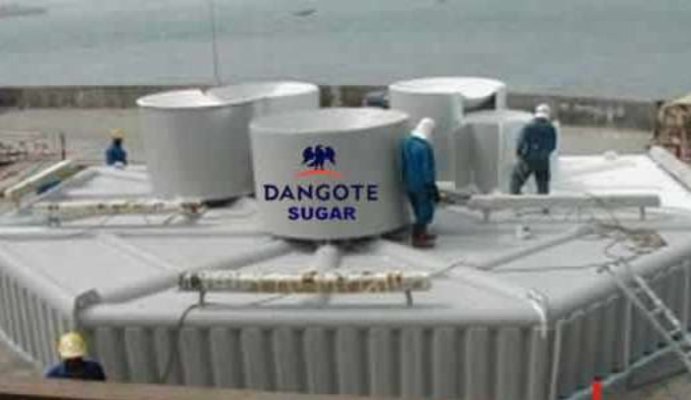The Insurance sub-sector of the Nigerian financial services industry is overwhelmed by many challenges, including narrow product development, a dearth of innovation and a pervading weak corporate governance structure, which have led to low insurance uptake at one percent and poor returns.
The above have affected investors’ sentiments about the industry, which has affected value of insurance stocks. Especially, narrow product focus by the Nigerian insurers has continued to generate low premium income.
For example in 2016, gross premium income (GPI) of over N356 billion was generated through mainly six compulsory insurance policies – third party motor insurance, employer’s liability insurance, group life insurance, builders’ liability insurance, healthcare professional indemnity insurance, and occupiers liability insurance.
Aside the foregoing is the regulatory mandate for the operators to recapitalize before January 2019. And most analysts are weighing the capital risk imbalance in the industry, which they say could influence the 2019 recapitalisation exercise.
The regulatory mandate stipulates clearly that insurance firms struggling to meet up with their current capital requirement levels would have to merge with other firms or agree to an acquisition from interested investors before January 2019, when the new recapitalisation initiative announced by the National Insurance Commission (NAICOM) is expected to commence.
Specifically, the tier-based minimum solvency capital structure had specified the minimum capital of N2bn, N3bn and N6bn respectively for Tier 3, Tier 2 and Tier 1 life insurance companies, while non-life insurance firms’ minimum capital are fixed at N3bn, N4.5bn and N9bn for Tier 3, Tier 2 and Tier 1, respectively.
According to investment analysts, some of the insurance companies are however struggling with the minimum base requirements, and that increase would be a death knell for many if the mergers and acquisition window is not taken advantage of.
Low level of capitalisation has hampered performance and weakened investor confidence in the insurance sector over the years. The analysts suggest that to raise their capital levels these companies must consider merging or acquisitions as a way out.
John Kanayo the chief research analyst at Imperial Asset Managers Limited told business a.m that the initiative from NA- ICOM is laudable and will inform a strengthened position of the insurance firms.
“Like the previous recapitalisation exercise, what we are going to see is a coming together of these firms to merge again. We are equally going to see some of them going under.”
Explaining that some of the insurance firms do not have the minimum capacity currently, Kanayo said: “For them to have the capacity, they need to go back to their shareholders to raise additional funds, or they can open up for foreign or local core investors.”
He however noted that with the market passing through challenges at the moment, asking shareholders to shore up capital base through a right issue will be a bigger challenge especially if over the years, the insurance firm in question have not been able to show how effectively their funds have been utilised.
Kanayo thus suggested an opening up to interested core investors either foreign or local, mergers or outright acquisitions as viable options to ensure compliance by the culpable insurance firms.
As improper capital structures threaten to extinct Nigeria’s insurance industry, NAICOM’s recapitalisation initiative was primarily to unburden the risk profiles of insurers following in- creased difficulty in fulfilling obligations to their policyholders and shareholders.
The recapitalisation is expected to drive soundness and profitability, support the stability of the financial system and guide the underwriting companies from taking risks beyond their financial and technical capacities.
Introduced in proportions that support the nature, scale and complexity of the business conducted by insurers, a 3-Level tier based minimum solvency capital (TBMSC) model specifies the capital requirement for each tier levels based on risk classification for each tier.
Noting that injection of a fresh capital fund by insurers is non-mandatory, NAICOM last week stated that cancellation of licence of any operator is not anticipated but subject to solvency control levels.
The reviewed capital levels are based on three tiers similar to how the banking sector institutions are categorised.
While the review does not extend to reinsurance companies, current levels will represent tier three but life, non-life and composite re-insurers who wish to level up to tier two must have an additional 50 percent of their respective current capital base levels.
To play in tier one, the recapitalisation regulation requires life, non-life and composite insurers to possess an additional 200 percent of their respective capital base.
The potential of the insurance firms will determine the level of investments in them, Ambrose Omordion, chief research officer at Investdata Consulting Limited explained to our correspondent on Friday.
While noting the development as a good one, Omordion echoed the option of mergers to be explored by insurance firms that are not financially sound.
“That will be a better way for them to survive and do the business in a bigger way,” Omordion said.
Using the acquisition of crusader insurance by Custodian and Alliance as a case study, Omordion explained that Custodian and Alliance have become strengthened. He added that it
was a decision to explore as it will facilitate a good management team, an improved capital base.
“If they decide to come to the capital market to source for funds, and they have potential, even banks will be willing to invest in them,” he said.
According to Mohammed Kari, the commissioner for insurance, the commission through the initiative wants to ensure each insurer has adequate capital to absorb the risks it was taking.
Kari explained that the recapitalisation became desirable as inflation and interest rates had soared in the last 10 years, while insurers still operated with the same capital base since 2007.
“Interest rate has gone from single to double digit, inflation has risen over time and with many macroeconomic and institutional factors on the upward trend, yet the industry still maintained the same capitalisation in the last 10 years. So, it is desirable for operators to now choose which tier they want to operate in.
He disclosed that the guidelines on the recapitalisation would be issued on August 3, 2018, adding that the insurance industry will, on January 1, 2019, commence the implementation of the three-tier recapitalisation initiative.
NAICOM has thus slated August 6-10, 2018, for awareness session with board members and key management staff of insurance companies.
The regulator says it plans to release the transition guideline by August 3, 2018; issuance of notification letter on assessed capital level will be from August 13 to 17, 2018, while the sub- mission of the board’s decision by operators to NAICOM will not be later than September 14, 2018.
This development is coming exactly two years after Nigeria’s minister of finance, Kemi Adeosun clamoured for the recapitalisation of the insurance sector.
In July 2016, Adeosun had said banks grew their capital requirements eight times faster than their insurance counterparts, which last raised capital levels in 2007.










